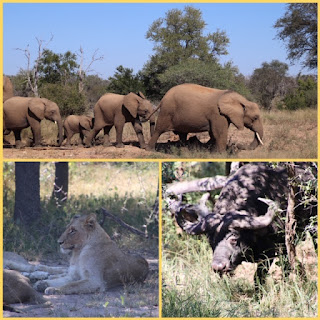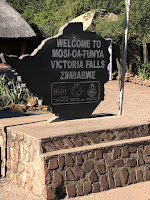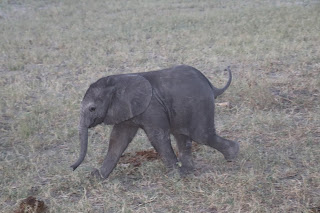Our final stop on our tour takes us to Kruger National Park. Outside of that park are our latest digs and final tented camp.
If The Victoria Falls Hotel is the epitome of class, then Lions Rock River Camp is … shall we say … a little more rustic.
The tents here are much smaller and much more … tent-like … than those at Iganyana (Lions, Giraffes & Elephants, Oh My! Part 3: Hwange). To say the least.
And while our tented camp is a bit off the beaten path, the towns surrounding Kruger is bustling. There is traffic. And traffic lights. Homes fill the valleys. And tree farms, vegetable farms and fruit farms fill the landscape.
We are finally able to break out the cold-weather gear we've been advised to pack. Fleece beanies, gloves, scarves, and all the layers. Winter is finally settling in.
It’s here that we will make our final game drives of the trip.
That leaves us with the Rhino. Find one and our trip will be complete.
Kruger National Park is one of the largest game parks in Africa. Over 7500 square miles of paved roads (and a few off-roads too) make it easy for your average visitor (and by that, I mean those in “regular” vehicles) to traverse.
The bush here is thick in many places and a bit more open on the southern end of the reserve.
It is filled with large formations of rock which appear to have just been dumped in the middle of the savanna, though that’s hardly possible given the size of them.
I imagine it is here where the Disney Imagineers got their inspiration for Pride Rock and I half-expected to see a baboon raising a lion cub above his head for all the animals to bow to.
But that never happened.
Our first game drive in Kruger was unsuccessful, where spotting the Rhino was concerned. We just knew we would find them. But alas, we drowned our sorrows in Windhoek Lager upon our return to camp that night.
The next day, we enter the park before sunrise. We're afforded early entry because we're in a safari jeep. I suspect they realize we have just about frozen our bits off on our way to the main gate. And require the warmth of the sun to keep the hypothermia at bay.
Again, I imagine the Disney Imagineers being inspired. Inspired by the magnificent sight of the sun rising over the savanna.
Nants ingonyama bagithi baba
Sithi uhhmm ingonyama
(Which, by the way, translates to "There comes a lion. Oh yes, it's a lion.)
Shortly after sunrise, as we make our way to the southern part of the park, we see a few jeeps stopped on the road. This tells us there's something ahead worth seeing.
As we get closer. We see them.
The rhino eludes us no more.
Our guide tells us that the white rhino has a wider mouth than the rare black rhino. The story goes that the person who first saw this unique breed of rhino, the one with the wide mouth, was trying to explain to others how to differentiate between this and the other rhino, the black rhino. Because both breeds are, in fact, the same color: gray. As the native was trying to explain it, others heard him to say, “white mouth”, rather than “wide mouth”. And so, the “white rhino” was named.
By this, our seventh and eighth game drives, we are seasoned game spotters. We’ve long since tired of seeing the JAFIs (don’t remember what that stands for, check it out here: Lions, Giraffes & Elephants, Oh My! Part 2: Chobe). And truth be told, even an elephant sighting late in the day doesn’t require a stop for pictures.
We’re content to sit, and bounce, and observe. And soak it all in.
This. Is. Africa.
It really has been a great tour! I’d be lying if I said we weren’t a little concerned when we realized most of our touring group were in their 70’s and even 80’s.
I’m so very happy to report that any concerns were quickly alleviated. All were seasoned travelers. They were flexible, positive, always on time, and friendly. There were also no complaints; even the guy who got swiped by the thorns of an acacia tree while on a game drive, requiring 5 stitches in his ear, was positive.
Add to that, a phenomenal guide who was patient, organized and humorous, and we simply could not have asked for more.
It’s here that we bid adieu to the group we’ve been touring with. Some are flying home. The rest are going on to Cape Town. We'll join them on the flight, and then part ways.







































